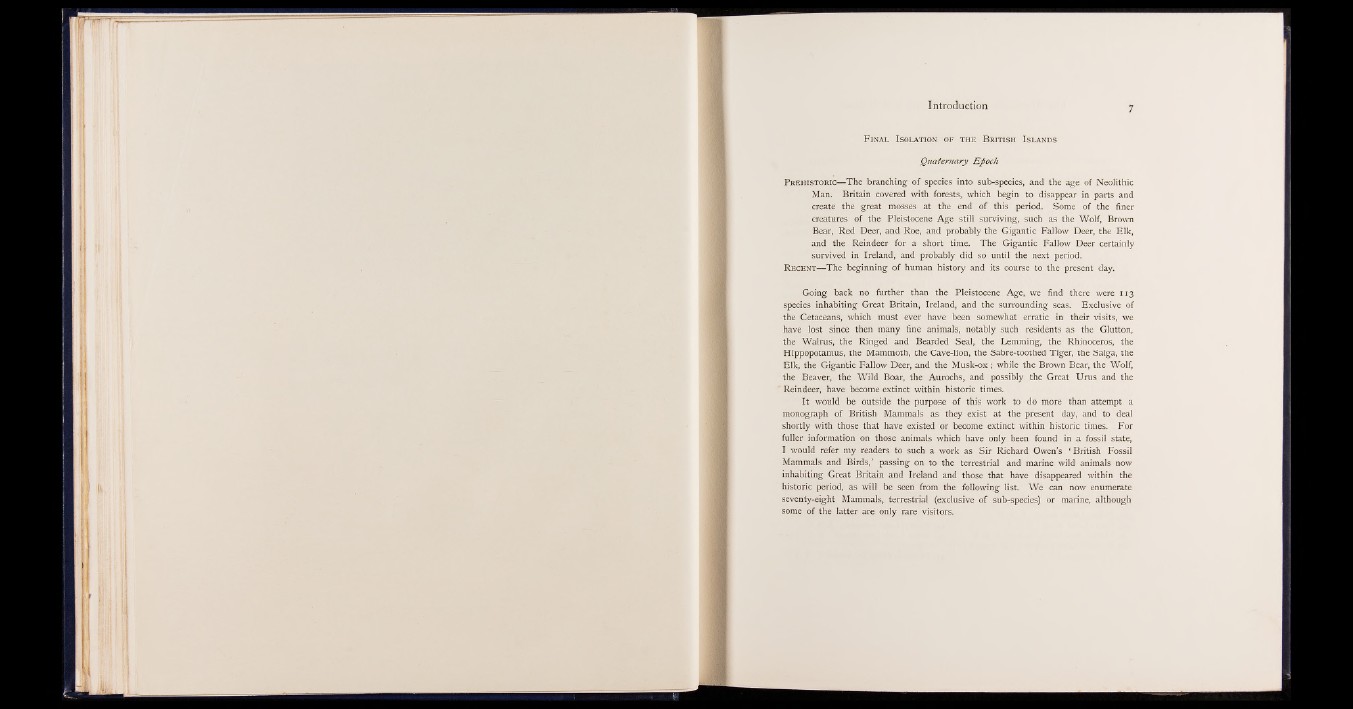
F i n a l I s o l a t io n o f t h e B r i t i s h I s l a n d s
Quaternary Epoch
P r e h i s t o r i c— The branching of species into sub-species, and the age of Neolithic
Man. Britain covered with forests, which begin to disappear in parts and
create the great mosses at the end of this period. Some of the finer
creatures of the Pleistocene Age still surviving, such as the Wolf, Brown
Bear, Red Deer, and Roe, and probably the Gigantic Fallow Deer, the Elk,
and the Reindeer for a short time. The Gigantic Fallow Deer certainly
survived in Ireland, and probably did so until the next period.
R e c e n t — The beginning of human history and its course to the present day.
Going back no further than the Pleistocene Age, we find there were 113
species inhabiting Great Britain, Ireland, and the surrounding seas. Exclusive of
the Cetaceans, which must ever have been somewhat erratic in their visits, we
have lost since then many fine animals, notably such residents as the Glutton,
the Walrus, the Ringed and Bearded Seal, the Lemming, the Rhinoceros, the
Hippopotamus, the Mammoth, the Cave-lion, the Sabre-toothed Tiger, the Saiga, the
Elk, the Gigantic Fallow Deer, and the Musk-ox; while the Brown Bear, the Wolf,
the Beaver, the Wild Boar, the Aurochs, and possibly the Great Urus and the
“ Reindeer, have become extinct within historic times.
It would be outside the purpose of this work to do more than attempt a
monograph of British Mammals as they exist at the present day, and to deal
shortly with those that have existed or become extinct within historic times. For
fuller information on those animals which have only been found in a fossil state,
I would refer my readers to such a work as Sir Richard Owen’s ‘ British Fossil
Mammals and Birds,’ passing on to the terrestrial and marine wild animals now
inhabiting Great Britain and Ireland and those that have disappeared within the
historic period, as will be seen from the following list. We can now enumerate
seventy-eight Mammals, terrestrial (exclusive of sub-species) or marine, although
some of the latter are only rare visitors.